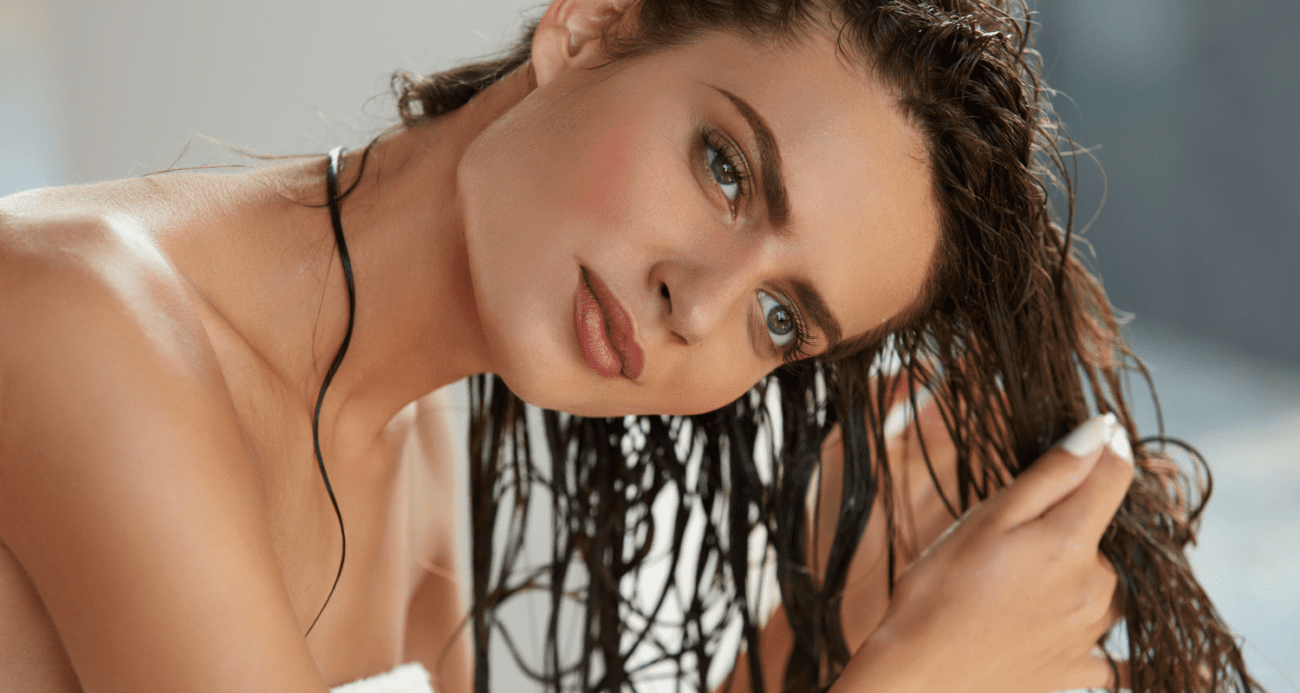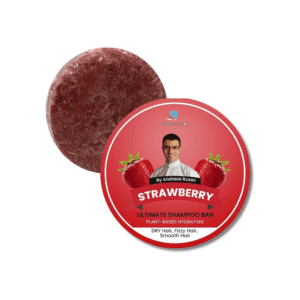Introduction
Hair is one of the first things people notice about us, and healthy, shiny hair can make a great first impression. More importantly, the condition of our hair is an indicator of our overall health. Healthy hair reflects good nutrition, proper hair care, and a low-stress lifestyle. Unhealthy hair can be a sign of internal issues or improper hair care.
There are many great reasons to pursue healthy hair growth. A full head of strong, shiny hair projects youthfulness, vitality and good health. For many, hair is an important part of self-image and self-confidence. Healthy hair growth allows greater freedom to style hair as desired. Some experience thinning or excessive shedding due to aging, stress, postpartum changes, or other factors – improving hair growth can help restore their previous thickness. For others, a hair care or diet change that optimizes growth may give them longer hair than they’ve ever been able to grow before.
Pursuing healthy hair and optimal growth requires paying attention to hair care practices, diet, stress management, and other lifestyle factors. With some education and simple changes, most people can improve hair growth and enjoy strong, shiny, healthy hair.
Know Your Hair Type
There are four main hair types: straight, wavy, curly, and coily. Knowing your hair type can help determine the best hair care practices and products for you.
Straight Hair
Straight hair tends to be shiny and smooth in texture. It is the strongest and most resilient hair type. People with straight hair still need to practice healthy hair habits but may be able to wash less frequently and use fewer intensive treatments.
Wavy Hair
Wavy hair has a gentle bend or wave pattern. It can be prone to frizz and may lack shine. Using moisturizing products and avoiding harsh shampoos is important. Allowing waves to air dry naturally often looks best.
Curly Hair
Curly hair ranges from loose spirals to tight coils. It tends to be dryer and more fragile. Using lots of conditioner, deep treatments, and curl-enhancing products helps maintain definition and moisture. Letting curls air dry helps maintain bounce.
Coily Hair
Coily or kinky hair forms tight zigzags or coils. This hair needs lots of moisture to stay healthy. Using heavy, nutrient-rich products and protective styles helps. Avoiding harsh manipulation of coils is also key. Embracing natural texture looks best.
Knowing your hair’s characteristics helps determine the right products and routines for care. Consulting a stylist can provide personalized guidance based on your hair type as well.
Use Gentle Hair Products for Hair Care
When it comes to hair care, using the right products is essential for maintaining healthy hair. Many conventional hair products contain harsh ingredients like sulfates and silicones that can damage hair over time.
Opting for more gentle, natural hair products is recommended for optimal hair health. Specifically, look for sulfate-free shampoos and silicone-free conditioners.
Sulfates are detergents that create lather and remove oil and dirt from the hair. However, they can be quite harsh and strip the hair of its natural oils. This can leave hair dry, brittle, and prone to breakage over time. Sulfate-free shampoos are gentler on the hair and scalp.
Silicones temporarily coat the hair shaft to make it appear smooth and shiny. But they can build up on the hair, weighing it down and preventing moisture from penetrating. Silicone-free conditioners nourish hair naturally without leaving residue.
Using sulfate-free and silicone-free products allows you to cleanse and condition hair gently without stripping oils or causing buildup. This helps maintain the natural moisture balance and strength of the hair.
Massage Your Scalp
Massaging your scalp on a regular basis provides many benefits for hair health and growth. By massaging, you increase blood circulation to the scalp, which delivers more nutrients to the hair follicles. This helps strengthen the roots and promote faster, thicker hair growth.
A scalp massage feels soothing and relaxing, which also helps reduce stress. High stress levels can lead to increased cortisol and inflammation, which may inhibit hair growth. By massaging your scalp, you can lower stress to create a better environment for your hair.
To massage your scalp correctly:
Use your fingertips to make circular motions all over your scalp. Apply light to medium pressure as you massage.
Focus on massaging areas where your hair feels thinner or weaker. Spend extra time massaging those spots.
Use a natural oil like coconut, olive, almond or jojoba oil to lubricate your scalp during the massage. The oil will also help condition your hair.
Massage your scalp for 5-10 minutes daily or a few times per week. Consistency is key to gaining the benefits.
You can massage while shampooing in the shower, or make it a relaxing self-care ritual.
By taking just a few minutes to massage your scalp regularly, you can stimulate circulation, reduce stress, and create the optimal conditions for healthy hair growth. It’s an easy, natural way to boost hair health.

Trim Regularly
Trimming split ends is one of the most important things you can do for healthy hair growth. Split ends occur when the protective outermost layer of the hair shaft becomes damaged, causing the hair to split and fray. This damage can travel up the hair shaft if left untrimmed, leading to more splitting higher up on the strand.
Split ends make hair prone to tangling, knotting, and breakage. The frayed ends get caught and wrapped around other hair strands, progressively worsening hair texture and manageability. Split ends also make hair look dry and frizzy.
To prevent split ends from worsening, it’s recommended to trim your hair every 6-8 weeks. This will remove the damaged split sections before they have a chance to split further up the hair shaft. Try to trim just the very ends, removing only 1/4 to 1/2 inch of length. For those with curly or coily hair types prone to tangling, trimming more frequently every 4-6 weeks can help minimize knotting and matting.
When trimming split ends yourself, be sure to use sharp hair scissors and avoid pulling or tugging hair while cutting. Cutting hair while wet or damp can help the ends align for a more even trim. Trimming frequently to nip split ends in the bud is one of the best ways to maintain the health of your hair and ends.
Protect Hair from Damage
Hair can become damaged from heat styling tools, sun exposure, swimming in chlorine, brushing when wet, and using harsh products. Here are some tips to prevent damage:
Limit use of hot tools like blowdryers, straighteners, and curling irons. Allow hair to air dry when possible. Always use a heat protectant spray when heat styling.
Wear a hat when out in the sun for long periods of time. The sun’s UV rays can dry out hair and cause damage over time.
Coat hair in olive, coconut or argan oil before swimming to create a barrier between the hair and chlorine. Rinse hair with fresh water after getting out of the pool.
Avoid brushing hair when wet, as the hair is weaker and more prone to breakage in this state. Use a wide-toothed comb to gently detangle after washing.
Check product ingredients and avoid sulfates, parabens, silicones and artificial fragrances which can strip natural oils. Use gentle, moisturizing shampoos and conditioners.
Get occasional trims to remove split ends before they travel up the hair shaft and cause breakage.
Consider protective styles like braids, buns or ponytails when hair will be exposed to lots of sun, wind or chlorine.
Eat a Healthy Diet for Hair Care
What you eat can have a big impact on the health and growth of your hair. Make sure your diet includes nutrients that support healthy hair:
Protein – Hair is made mostly of protein, so getting adequate protein from foods like meat, eggs, fish, beans, nuts, and seeds is important. Protein deficiency can lead to hair shedding and loss.
Iron – Iron carries oxygen to your follicles which is needed for growth. Include iron-rich foods like spinach, red meat, beans, and lentils. Low iron (anemia) has been linked to hair loss.
Zinc – Zinc plays a role in hair tissue growth and repair. Oysters, nuts, seeds, legumes, and whole grains are good sources.
Vitamin C – Vitamin C aids iron absorption. Citrus fruits, strawberries, tomatoes, broccoli, and potatoes are high in vitamin C.
B Vitamins – B vitamins help carry oxygen and nutrients to hair follicles. Get them from meat, eggs, nuts, seeds, fish, and non-citrus fruits.
Biotin – Biotin deficiency can lead to brittle hair. Foods like eggs, salmon, avocados, nuts and seeds have biotin.
Omega-3 Fatty Acids – These healthy fats promote scalp health. Eat omega-3 rich foods like salmon, walnuts, flax seeds, and chia seeds.
Eating a balanced diet with these hair-healthy nutrients can help nourish your follicles from within and promote healthy hair growth.
Manage Stress
Stress can have a big impact on the health and appearance of your hair. When you experience stress, your body produces more cortisol and other hormones that can interrupt the normal hair growth cycle. During stressful times, more hairs may prematurely enter the shedding phase (telogen effluvium). Stress may also trigger inflammatory skin conditions like dandruff or eczema on the scalp, which can further impair healthy hair growth.
To combat stress-related hair issues, focus on relaxing self-care activities like yoga, meditation, reading, or taking a bath. Getting adequate sleep is also essential. Seek professional help from a therapist if you are dealing with chronic stress, anxiety, or depression. Finding ways to manage stress levels will promote a healthy scalp environment and minimize excessive shedding related to stress.
Use Natural Oils
Natural oils are an excellent way to moisturize and nourish your hair. Some of the best oils for hair health include:
Coconut Oil – Coconut oil is rich in fatty acids that help strengthen hair and add shine. It can help prevent protein loss in hair and protect it from damage. Massaging coconut oil into your scalp and hair can promote growth.
Argan Oil – Argan oil is known as “liquid gold” because it contains vitamins A, E, antioxidants, and fatty acids. It helps repair damaged hair, reduces frizz, and boosts shine. The fatty acids nourish hair follicles to stimulate growth.
Olive Oil – Olive oil conditions, smooths, and strengthens hair. It contains vitamin E and fatty acids that prevent breakage. Olive oil helps lock in moisture, improves elasticity, and repairs split ends. Leaving olive oil on your hair overnight can deeply nourish it.
Grapeseed Oil – Grapeseed oil is lightweight and won’t weigh hair down. It contains vitamin E, proteins, and linoleic acid to strengthen hair and promote growth by improving circulation in the scalp. It adds shine and smoothness as well.
Using natural oils 1-2 times per week can deeply moisturize hair and scalp. Focus the oils from mid-length to ends to avoid excess oil at roots. You can use oils before shampooing as a treatment or apply sparingly after as a leave-in. Finding the right oil for your hair type helps maximize benefits.
Conclusion
Taking good care of your hair is important for keeping it looking and feeling its best. By being gentle, avoiding damage, and promoting growth through scalp massage and a healthy lifestyle, you can help your hair thrive.
Some key tips to remember are using natural, gentle hair products free of harsh ingredients, trimming regularly to avoid split ends, protecting hair from heat and UV damage, managing stress, and eating a nutritious diet. Oiling your hair with natural oils like coconut, olive, or argan can also help condition and strengthen your strands.
Focus on keeping your hair healthy rather than obsessing over extreme growth. With proper care tailored to your hair type, you can maintain beautiful, shiny locks. Treating your hair gently and listening to what it needs is the best approach for optimal hair health and reasonable growth over time.






